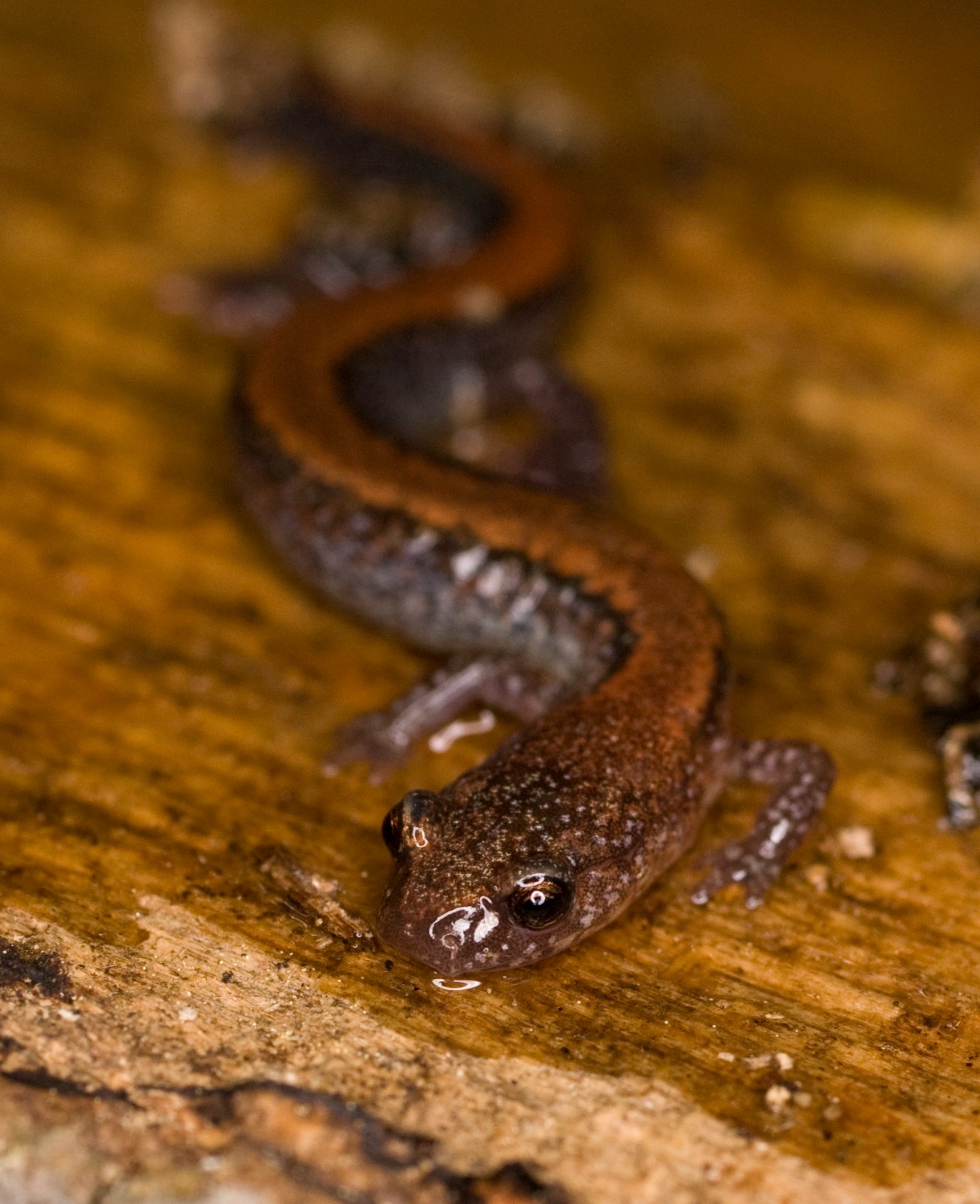
Herp Update: Fall Migration of Amphibians – September 29, 2021
Fall Migration of Amphibians
Very few people are aware of the fall migration of amphibians. The uphill migrations consist of amphibians moving from moist lowlands (near breeding ponds) to better drained upland forests where they will follow small-mammal tunnels and other holes deep enough underground so that they will not freeze over the winter.
I have often headed over to our local Salisbury hotspot for amphibian crossing (Morgan Road) on warm rainy nights in October, November, and December. Once there, I walk though the roughly 1000-ft long crossing area tallying the numbers and species seen crossing in that one pass. It usually takes me about 15 minutes to walk through the crossing area. Based on the data gathered during these walks, I can say that from now through November, there is likely to be significant uphill movement of Eastern Red-backed Salamanders, Four-toed Salamanders and Blue-spotted Salamanders.
I have seen Eastern Red-backed Salamanders active on Morgan Road here in Salisbury as late as December 21 (2018). However, Eastern Red-backed Salamanders will get up and move around for a mid-winter snack even during a January thaw if the ground is exposed and it rains. So, looking at only dates when there was significant uphill movement (>10) of Eastern Red-backs at Morgan Road, our latest record is December 10 (2017). I found 32 moving uphill in my 15-minute walk on November 23 (2012).
I have seen single Four-toed Salamanders moving as late as December 2 (2012) on Morgan Road, but the latest significant (11) uphill movement was on November 18 (2013). Averages on walks in October were about 20 per crossing.
I have seen single Blue-spotted Salamanders as late as December 2 (2012). The latest significant (10) uphill movement that I saw was on November 16 (2011). On rare occasions, I have seen Blue-spotteds move across wet roads even during the day.
I also have seen small numbers (<10) of Spotted Salamanders, Spring Peepers, and Wood Frogs into December, but I have no records of large uphill fall migrations for these three species.
I highly recommend keeping your flashlight and reflective clothing handy this fall. When the temperatures are above 32 F (the warmer the better) and the roads are wet from rain after dark, some amphibians will be moving. Head out to a quiet country road between some wetlands and some upland woods and you may see a fall migration of amphibians. If you do, please let us know what you found.
Jim

